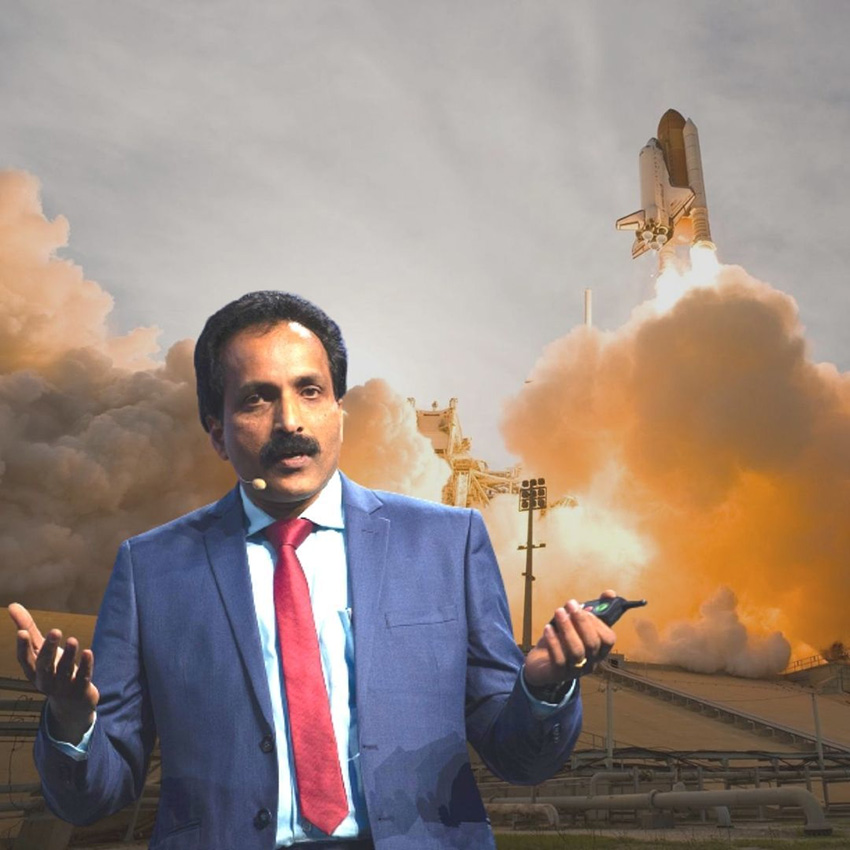ISRO has busy schedule of space exploration missions
ISRO, is actively engaged in conventional scientific missions, encompassing communication and remote sensing satellites
By R. Anil Kumar
Bangalore, October 16. The Indian Space Research Organisation (ISRO) is actively engaged in a series of space exploration missions, including ventures to Mars, Venus, and a return to the Moon, alongside the maiden human spaceflight program, as stated by ISRO Chairman S. Somanath. Additionally, ISRO has devised plans to launch missions focused on studying Earth’s climate and weather conditions.

In addition to these ambitious exploration missions, ISRO continues to dedicate its efforts to regular scientific endeavors, encompassing communication and remote sensing satellites, says S. Somanath, who also serves as the Secretary of the Department of Space.
Regarding the Gaganyaan program, Somanath announced that the maiden TV-D1 test flight is slated for October 21. Expounding on ISRO’s upcoming missions, the Bengaluru-based space agency is venturing into a realm of exploration. This includes plans for missions to Mars, Venus, and the Moon, as well as programs aimed at scrutinizing Earth’s climate and weather patterns.
Somanath underscored that ISRO scientists will continue to handle routine missions, such as satellite launches for communication and remote sensing. Moreover, they are working on scientific missions addressing subjects like aeronomy, thermal imaging, and climate change impact assessment.
Somanath emphasized the organization’s busy schedule, stating, “So many things are there, and we are very busy doing all of this.”
Responding to inquiries about any potential response from the Vikram lander of the Chandrayaan-3 spacecraft, which successfully executed a soft landing on the Moon’s surface on August 23, Somanath explained that Vikram had performed its tasks as programmed during the lunar day (equivalent to 14 Earth days).
He added, “It is happily sleeping on the Moon. It has done its job very well. Maybe if it wishes to wake up, let it wake up. Until then, we will wait.”
ISRO had made efforts to re-establish communication with the rover Pragyan and lander Vikram after they were placed in sleep mode in September, coinciding with the onset of night on the Moon.
However, no signals have been received from them, and efforts to re-establish contact are ongoing.
Following the historic landing on August 23, the lander Vikram and rover Pragyan carried out various tasks on the lunar surface, including the detection of sulphur and recording relative temperature.
Somanath also commented on ISRO’s first mission to study the Sun, revealing that the spacecraft is in “very healthy” condition and is on a 110-day journey to reach the Lagrange point L1. It is expected to arrive at its intended destination by mid-January. He explained, “It is a long journey. It is almost 110 days of journey, and it has covered some distance now.
We corrected a little bit of its trajectory because early correction is important to reach the L1 point. After tracking, we find it is going in the right direction towards the L1 point.”
He further noted, “It takes almost another 70-75 days further to reach. By the middle of January, it will reach there. After that, we will make some corrections to make it enter into the Halo orbit at the L1 point.”
“After that, instruments will be switched on, and it will start doing the scientific data streaming. Currently, everything is very healthy on Aditya L1,” he said.
The Aditya-L1 mission, launched on September 2, is India’s first space-based observatory designed to study the Sun from a halo orbit around the first Sun-Earth Lagrangian point (L1), situated approximately 1.5 million kilometers from Earth.





